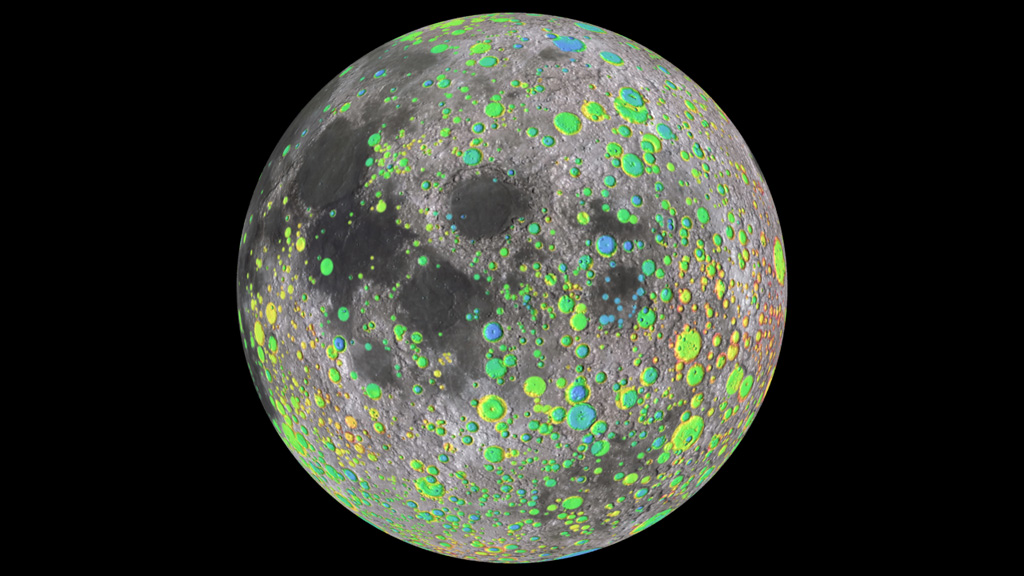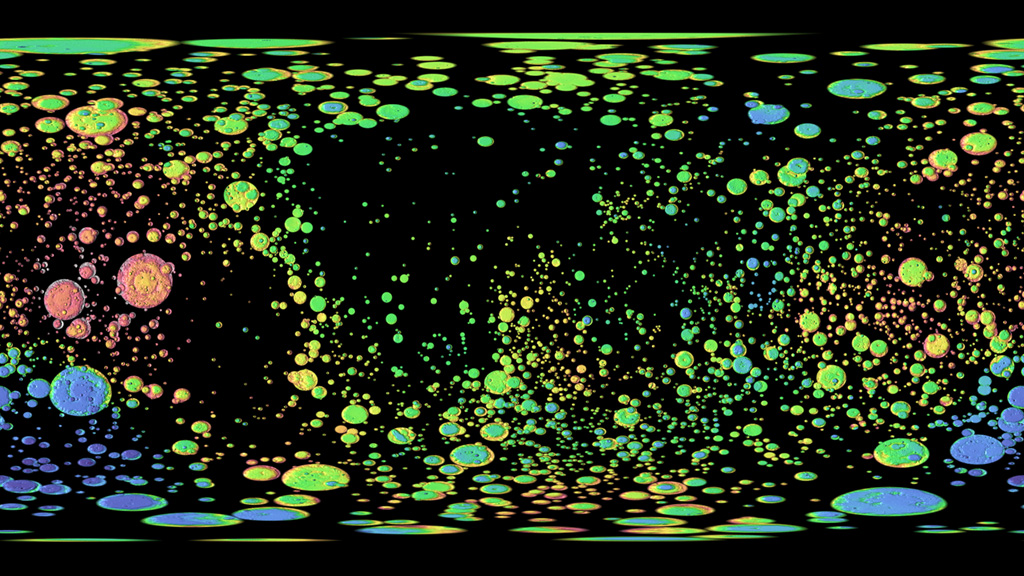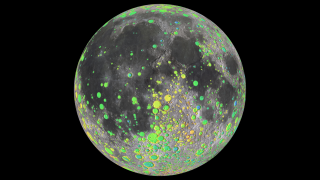Planets and Moons
ID: 11750

Ever since Galileo first trained his telescope on the moon in the 17th century, astronomers have wanted to know more about its craters: How many pit its surface? How big are they? And how did they form? Answers came flooding in when NASA’s Lunar Reconnaissance Orbiter (LRO) began circling the moon in 2009. A laser-ranging instrument aboard the spacecraft mapped the moon’s topography in high definition, revealing the location of more than 5,000 craters over 12 miles in diameter, and countless others smaller in size. Researchers found the distribution of large and small craters varies, with more big craters covering the moon’s bright highlands, and more small craters dotting the dark lowlands. The results suggest two distinct populations of impactors pummeled the moon over the past 4.5 billion years. Watch the video to see a color-coded map of lunar craters created from LRO data.



Counting Craters




Related Story
Story Credits
Lead Visualizer/Animator:
Ernie Wright (USRA)
Visualizer/Animator:
Marte Newcombe (GST)
Producers:
Chris Smith (Self)
Andrew Freeberg (NASA/GSFC)
Lead Scientist:
James W. Head III (Brown University)
Lead Writer:
Kerry Klein (USRA)
Ernie Wright (USRA)
Visualizer/Animator:
Marte Newcombe (GST)
Producers:
Chris Smith (Self)
Andrew Freeberg (NASA/GSFC)
Lead Scientist:
James W. Head III (Brown University)
Lead Writer:
Kerry Klein (USRA)
Please give credit for this item to:
NASA's Scientific Visualization Studio
NASA's Scientific Visualization Studio
Short URL to share this page:
https://svs.gsfc.nasa.gov/11750
Keywords:
SVS >> App
NASA Science >> Planets and Moons
https://svs.gsfc.nasa.gov/11750
Keywords:
SVS >> App
NASA Science >> Planets and Moons








